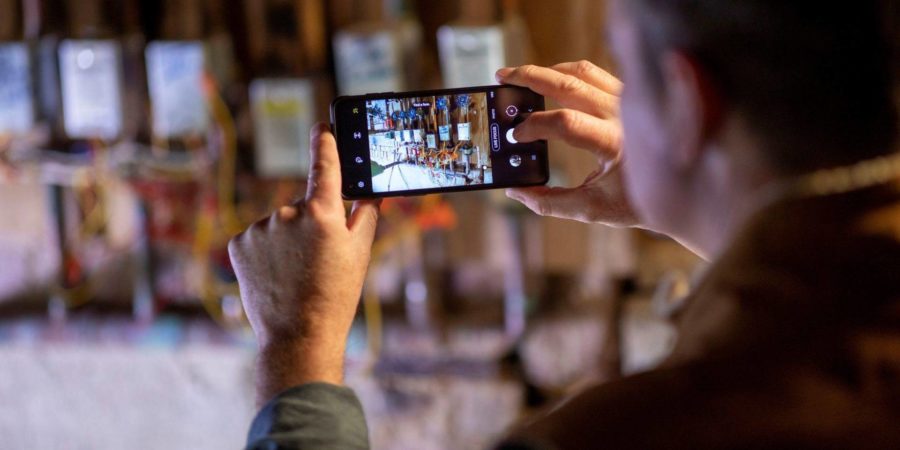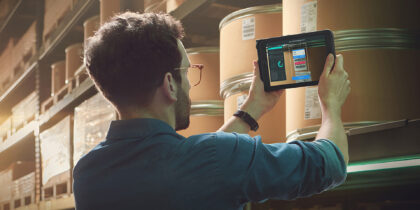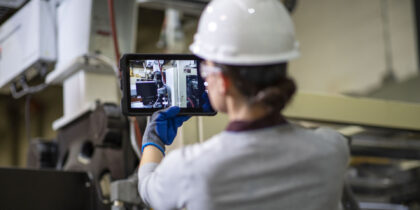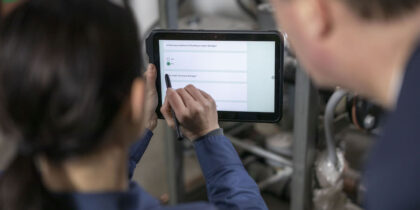Across industries as diverse as transportation, manufacturing, utilities, retail and hospitality, operations managers all face the same basic problem: They need to be able to communicate quickly and effectively with busy field teams who are constantly on the move.
For decades, two-way radios served as their key communications tool. But in today’s digitally transformed world, the limitations of legacy land mobile radio (LMR) and voice-only communications has become apparent.
Smartphones have quickly made their way into daily use among field-based teams, either as part of a formal companywide deployment or a Bring Your Own Device (BYOD) policy. Powerful handheld computers with access to a multitude of apps, group messaging, email, location-sharing and high-resolution cameras — the smartphones’ advantage over two-way radios needs little explication.
However, consumer smartphones have one downside when it comes to field communications: They are not designed with push-to-talk (PTT) communications in mind. To put it simply, field workers don’t have time to launch their phone’s dialer app and tap in a number each time they need to call in a work order or request support.
Fortunately, this is changing with a new breed of field-ready smartphones that incorporate tactile PTT buttons for instant voice communications. With PTT communications at their disposal, workers in all these industries and more can connect to their field teams fast.
PTT in the smartphone era
Cloud-based PTT apps can run on just about any smartphone, but devices like Samsung’s Galaxy XCover Pro give field workers a familiar walkie-talkie experience thanks to their rugged form factor and programmable physical buttons. Communications can be initiated with a single press, even when wearing gloves, thanks to close integration with leading PTT solutions such as Microsoft Teams Walkie Talkie, Verizon Push to Talk Plus and ESChat.
PTT communications and mobile workflow apps on a single device make a powerful combination.
With a PTT-ready smartphone, a logistics manager can connect directly to their dispatch department for updates on truck locations and operational issues. On the same device, they can also view real-time truck locations on an interactive map or download technical documentation to resolve an issue.
In manufacturing, a PTT-ready smartphone can link managers directly to the factory floor so they can troubleshoot issues and devise solutions with expert technicians. Taking advantage of the smartphones’ high-resolution camera and augmented reality (AR) assistance apps, they can also livestream video of malfunctioning machinery while the technician annotates on-screen to pinpoint the faulty part.
Similarly, a utilities manager can use their PTT-ready smartphone to effectively oversee power line repairs during disasters. They can remain in constant contact with field crews while looking at the same schematics and diagrams of affected lines that their crews are seeing, all on their phone screens.
Finally, a PTT-ready smartphone is a boon to a hotel operations manager directing teams of servers during large catering events. It can connect them straight to the executive chef, front desk and head of housekeeping any time things get out of hand.
Across all use cases, the same smartphones delivering PTT capabilities can also run workplace safety apps to remind employees to maintain social distancing and sanitary habits while on the job — something traditional LMR and walkie-talkies can’t do.
What “rugged” means
Sure, all of this hands-on management can be done at a distance using a PTT-ready smartphone, but mobile devices also need to be rugged if they are to stand up to the job, day after day.
While many consumer smartphones today feature some level of water resistance, “rugged” or “ruggedized” is typically used to describe purpose-built mobile devices that are tough enough to meet the U.S. Department of Defense’s MIL-STD-810G standard.
Rugged smartphones that meet MIL-STD-810G have survived a series of more than 20 rigorous tests, including drops, vibration, extreme temperatures and low pressure. They’re built for tough work environments and can handle more than a few bumps and spills.
Built for the job
Clearly, operations leaders in transportation, manufacturing, utilities, retail and hospitality need ruggedized PTT smartphones that are purpose-built for field communications.
Building on Samsung’s portfolio of field-ready mobile devices, the Galaxy XCover Pro combines a powerful smartphone feature set with a rugged design. It’s built like a beast but doesn’t sacrifice the beauty that customers expect from a Samsung smartphone.
Engineered to meet MIL-STD-810G and IP68 standards, the Galaxy XCover Pro is a fully featured 4G/LTE Android smartphone with a programmable PTT button for instant communications. It comes with a large 6.3-inch touchscreen, dual cameras, easy-to-connect pogo pins for fast charging and a replaceable 4,050mAh battery that can be swapped out in the field.
Not only is the XCover Pro rugged and PTT-capable, it’s also secure, thanks to Samsung Knox, the defense-grade mobile security platform. And for extra connectivity, the XCover Pro can connect to Band 48/Citizens Band Radio Service (CBRS), a license-free wireless band that can be used for short-range data communications between Band 48-enabled mobile devices.
A ruggedized PTT smartphone like the Samsung XCover Pro is exactly the kind of tough device that workers in transportation, manufacturing, utilities, retail and hospitality need to handle field communications effectively. Anything less won’t stand up to the rigors of the job.
Get your free guide to empowering your field services team with mobility. Then discover how ruggedized smartphones are driving lean manufacturing.








